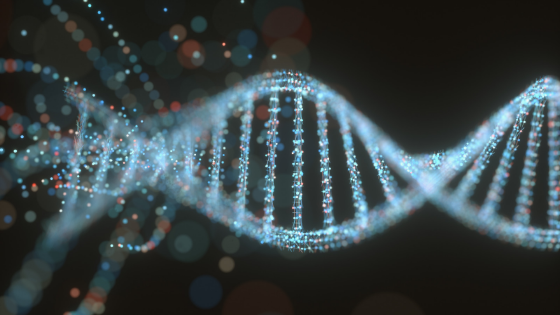What is DNA?
 13
13Mar
DNA has changed the world of genealogy over the last decade. But what is DNA? What is the molecule that links generations?
You’ve probably seen those pictures of what looks like a twisted ladder. DNA is deoxyribonucleic acid or a molecule composed of two chains coiled around each other, forming a double helix. DNA carries genetic information and instructions used for the body’s development, reproduction, functioning, and growth.
Our appearances, abilities, growth, and more are affected by our DNA. It links us to others, it links us to previous generations, and if we pass it on, it links us to future generations. Learning about DNA, your own and your family’s can open many doors to your genealogical research.
Learning About Your DNA
Curiosity about our DNA is only natural. Where do your blue eyes come from? Is the gap in your teeth genetic? DNA can have a lot of answers. The results from DNA testing can tell you more than where your hair color comes from. You can also learn about your family’s health history which may show you a glimpse into your own future. Combining DNA test results and family history research can bring you miraculous results—you may even connect with new family members. Having your DNA testing gives you the chance to learn about yourself and your family on a whole new level.
Where to Get Tested
There are many places that offer quality DNA testing. You can purchase simple DNA kits that usually only require a little spit from your and a few weeks to gather your results. You’ll be mailed results that will link you to generations. Some companies will include cousin matches to help you make even more family connections. There are many options that have slightly varied experiences. Some of the best options include 23andMe, Ancestry DNA, FamilyTree DNA, MyHeritage, and Living DNA.
What to Do After DNA Testing
After you get your DNA results, what next? If you have not yet created a family tree, that is a great place to start. Filling in any blanks on your family tree is the next step—your DNA result may help you fill in some previously blank spaces.
DNA tests will tell you where your ancestry came from. This will give you the chance to learn more about their homelands and countries of origin. This can be a great direction for your research. Learn about your family’s culture. It may also help you find more family members as you know where to look for them. You may find more family records when you search with these places in mind.
Some DNA companies will match you with other DNA their database—introducing you to new family members. Each match opens doors to more family lines and more family members.
You can also determine DNA segments of your ancestors with this information using chromosome mapping. This technique can help your isolate DNA of specific ancestors to determine cousin matches and other ancestors.
